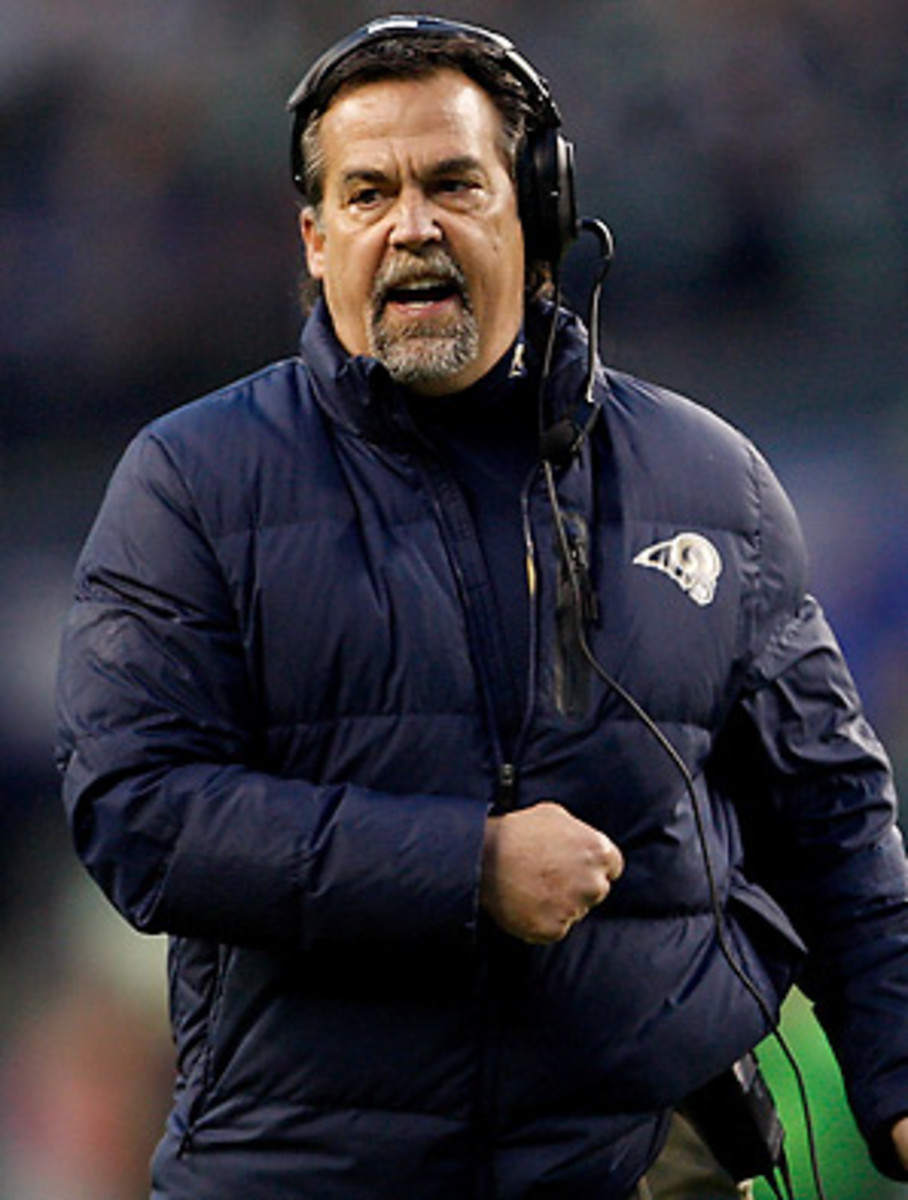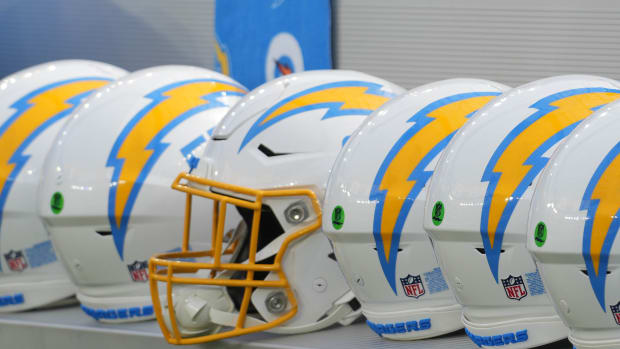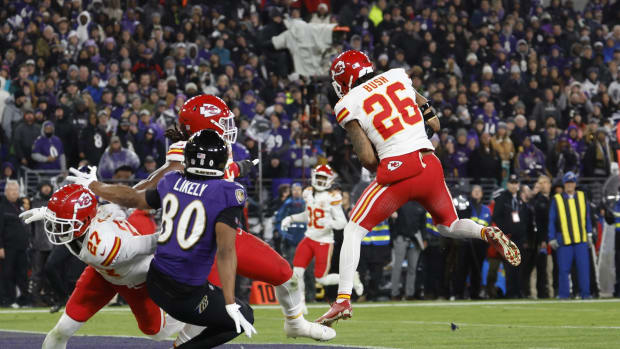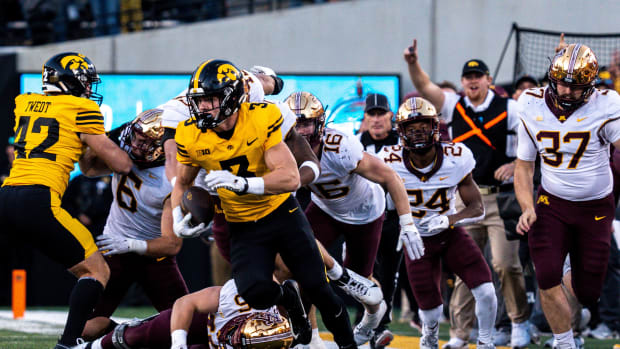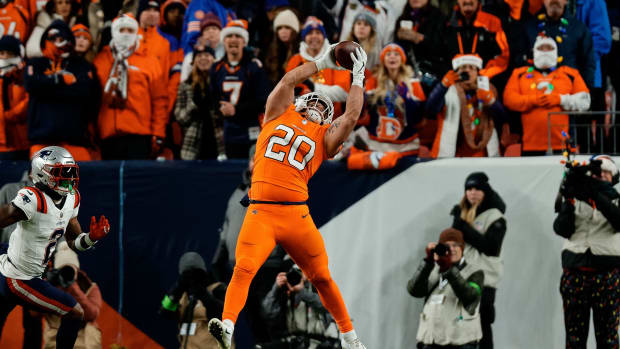Rams started their rebuilding effort the right way in 2012; mail

Jeff Fisher led the Rams to an impressive 4-1-1 record in the NFC West in 2012.
Kevin Casey/Getty Images
On Black New Year's Day, as 11 NFL teams try to figure out what to do with either their organization, GM, coach, coaching staffs -- or all of them -- I bring you my Smart Team of the Year: the St. Louis Rams.
I don't mean the best team of the year. I mean the team that, in the span of one year, did the most to turn itself around, and did it wisely, and used every resource it had available to get it done. And if the rebuilders of 2013 are smart, they'll study the lessons of the Rams of 2012.
First, to be fair, this bit of full disclosure: The COO of the Rams, Kevin Demoff, is the son of my representative, Marvin Demoff. The coach of the Rams, Jeff Fisher, is also represented by Marvin Demoff. So if you find all that to be a little too cozy for you-- and you don't believe I'll be fair or accurate is assessing what the Rams have done this year -- then feel free to skip this first column of the new year, or go straight to the next section of the column. I'll understand.
A little more than a year ago, Rams owner Stan Kroenke read a book by Boston-based author Michael Holley that I've recommended highly, War Room. It's about the formation of modern pro football teams and front offices, and how Bill Belichick and two former Patriots personnel men, Scott Pioli and Thomas Dimitroff, went about building the Patriots, Chiefs and Falcons. Kroenke liked the division-of-labor aspects of the book, and he also liked the fact that teams can best be formed with a strong titular head of an organization, that most often being a strong head coach. So he had Kevin Demoff, his man on the ground in St. Louis, go hard after the best available head coach/franchise leader he could find. That man, Kevin Demoff thought, was Fisher. After dueling with Miami, the Rams landed Fisher. The next step was finding a smart personnel man who would look everywhere for players -- small college, Arena, Canada, didn't matter. That man, Kevin Demoff thought, was Dimitroff's Atlanta lieutenant, Les Snead. So in came Snead to repair the dumpster fire the team had become (10-38 in the previous three years, 2-14 in 2011).
The first order of business was deciding whether to draft one of the franchise quarterbacks, Andrew Luck or Robert Griffin III, with the second overall pick. Sam Bradford was the incumbent in St. Louis, but he'd been injured two of the previous three seasons (one at Oklahoma, one in St. Louis), and Snead and Fisher had to study Bradford the person and Bradford the player to see if he was the right man. And they had to see if there'd be a strong market for the second pick in the draft. There was. When Fisher watched Bradford on tape, he knew he could make all the throws. He was comfortable with Bradford's medical reports, and he liked Bradford the person. And once the offers started coming in -- strong ones from Cleveland and Washington -- Fisher and Snead knew a trade would be a smart way to go.
Washington did the deal: first-round picks in 2012, 2013 and 2014, and a second-round pick in 2012, to move up four spots in the first round. That gave Washington Griffin, as it turned out. And after two additional trades on draft day, with Dallas and Chicago, this is what the Rams got in the trade with Washington, as it stands now:
So, as it turns out, St. Louis moved down 12 spots in the first round in 2012 -- and got two first-round picks, two second-round picks, and a fifth-round pick for the swap of ones. That's as it stands now. Snead and Kevin Demoff could pull off more deals with the extra ones in the next 16 months.
The hidden benefit of the deal is that St. Louis, with the current trade parameters in place, will have by 2014 a league-high 12 players, 23 percent of their 53-man roster, under the team-friendly control of the new rookie salary scale. That's two from 2011, four from '12, three from 2013 and three from 2014. In the flat-cap era the league will have in place for the next two years at least, the Rams are ahead of the game with getting good young players at manageable prices. Trading the second pick overall last year yielded, as of today, five of those salary-friendly high picks.
Now, none of this means anything if Bradford bombs. And the jury's still out on him. In his two full seasons quarterbacking the Rams, all his numbers are pedestrian, at best. He's been the 25th- and 18th-rated quarterback in football in 2010 and 2012, with a pedestrian 58.8 percent completion rate and a plus-11 touchdown-to-interception radio. All the excuses are there for him -- a struggling offensive line, all young and new receivers. But if doesn't make this offense soar in the next couple of years, he'll be forever known as the Rams' Sam Bowie to Michael Jordan, assuming Griffin keeps being the phenom he was in his first season. (Google that, youngsters, if you don't get it.)
You know most of the rest. Jenkins, shaky earlier and still a worry because of his off-field college rap sheet, was terrific for the last month of the season, and finished with four touchdowns, three on interception returns. Brockers' year was marred by a preseason ankle injury, but he looks like a keeper in the middle of a rising line. Pead was just a guy, and Watkins unimpactful. The Rams have more picks in the first two rounds of the next two drafts (six) than any team as it stands now. Kevin Demoff signed Chris Long and James Laurinaitis as long-term defensive leaders. Snead and Fisher got Cortland Finnegan to come in as the shutdown corner they lacked.
Fisher ran a tight ship. When he addressed all rookies before the season, he brought all of their family members to St. Louis to make sure not only the players but those close to them understood what his rules would be -- with the tacit message of Help the ones you love, don't drag them down, distract them or leech off them. When Jenkins and fellow rookie Chris Givens broke an unspecified team rule the night before the Rams' game at San Francisco in November, he suspended them for the game and made them run the Candlestick Park stadium stairs as punishment before the game -- with Niners fans watching. The Rams tied San Francisco that day, and beat the mighty Niners at home in December. St. Louis tightened up significantly on defense. The Rams allowed 214 more points than they scored in 2011; they were a respectable minus-49 this year.
One play, to me, typified what Fisher instilled in this team. Late in the second quarter of the tie at San Francisco, the Rams had a 4th-and-4 at their 10-yard line. Special teams coach John Fassel, in studying the Niners punt-defense team, saw a consistent weakness he thought St. Louis could exploit. The 49ers">49ers sometimes left the gunner (the punt-pursuit man wide left or wide right of the formation) unblocked by sending the blocker on the gunner in to try to block the punt. How easy it would be, Fassel thought, to complete a pass to an uncovered gunner. He told Fisher about it. Fisher wanted to run a fake at some point in this game. When Fassel brought it to him, Fisher eschewed traditional wisdom about faking a punt from your own end zone. Go for it, he said -- if the Niners went for the punt block.
On this play, Niners cornerback Chris Culliver came off the gunner, safety Rodney McLeod, two seconds before the snap of the ball. Punter John Hekker saw it. Hekker faked the punt and threw the ball to McLeod. First down.
Hekker, undrafted rookie free agent. McLeod, undrafted rookie free agent. Hekker, with a pass 23 yards in the air from four yards deep in the end zone. McLeod, with the catch. Imagine having the faith in two kids off the street, in a game against the best team in the division, on the road. If this fails, Fisher is the laughingstock of the league, fake-punting from his own end zone. Unheard of.
But it didn't fail. Like most of the chance St. Louis took in 2012, it didn't fail.
***
I said I'd be writing about two of my favorite players from 2012, Blair Walsh and C.J. Spiller, today. If I can beg your indulgence, I'd rather give them a fuller airing in next Monday's column. Look for my thoughts on the two of them next Monday.
***
Now for your email:
HE DOESN'T LIKE MY "SHODDY'' HAIKU. "I don't think there should be an issue with Mike Smith playing his starters, he should know his team better than anyone, but I think he should have toned down his "all-in" approach. John 'Handle With Care' Abraham, who's their top pass rusher, is 34 years old and has been fairly injury-prone throughout his career. You have to let that guy sit. Using the Vikings as an example, Les Frazier sat key vets like Jared Allen and Antoine Winfield for most of the year in order to preserve them and, I expect, if the Vikings had clinched before Sunday, both of those guys would have been riding the bench. Smart coaching.
Also, here's a better Haiku than you're shoddy one about the Skins and Seahawks.
Adrian PetersonNine yards to pass DickersonThere's always next year."
-- From Brett Stott, of Ottawa
One: Coaches don't like to pick and choose who they sit, but I agree with you on Abraham. Two: You think you're going to the Haiku Hall of Fame with that?
YOU'RE MISSING SOMETHING, STEVE. "Not seeing a lot of ink around the impact that the League's stubbornness (greed?) regarding the officials lockout had in the end. The disaster in Seattle is the difference between Green Bay having a bye and San Francisco getting it. Maybe I've been too busy to see the discussion of it (missed a lot of this weeks talking heads), but that is a huge difference in San Francisco's and Green Bay's paths to the Super Bowl, given that both teams have the very realistic possibility of winning it. Is anyone in the league office going to be held accountable for this type of garbage? I know there is a better chance of a primate slipping out of your backside than that answer to that being yes - a real pity.''
-- From Steve Edwards, of Louisville
Did you see the announcement about the head of officials Carl Johnson moving back to the field in 2013? And have you heard the whispers that NFL VP Ray Anderson could soon be headed to an NFL front office? The league will say performance and the lockout had little to do with either move, but I believe, particularly if Anderson leaves, it will be a factor in both.
WHY, THANK YOU. "First, couldn't imagine going through a season without MMQB - really appreciate the work that goes into it. Second, you mentioned Ed Hochuli as one of the best refs in the NFL, and I was wondering if his grading still bears that out. It just seems to me that the last few times I have watched him ref a game, that game has a lot of interruptions, shaky calls, and a general lack of cohesion from the officiating (best example was NE-SF game a few weeks back), and I worry that maybe Hochuli suffers from what ails a number of NBA officials - they forget that not one person tunes into these games to see the officials.''
-- From Andrew Gordon, of Washington
In that Patriots-Niners game, I can tell that interminable delay was not Hochuli's fault. I believe one of the officials on his crew called the play incorrectly at the start, calling a penalty on the incorrect team, and by the time the mess was straightened out, instead of marking off an incorrect call, Hochuli fixed the call and took the heat himself. Hochuli is a loyal referee. He would never out one of the officials on his crew for a mistake.
ALL GOOD POINTS, MIKE. "I'm starting to feel as if Bill Belichick is being overlooked year after year for Coach of the Year consideration because he is TOO consistent. It seems this award goes to a coach who has little or no expectations that he will win and wind up having a slightly above average season.''
-- From Mike, of Boston
True, and probably unfair. Same thing happened all the time with Chuck Noll.
I AM SHORT-SIGHTED. "While I also admire what Adrian Peterson has done, I am also amazed at how short-sighted you are regarding NFL history. Gale Sayers in the second week of November of his fourth season [1968] had his ACL, PCL, and MCL destroyed. He was operated on in a way by what we today would call crude and laughable methods. He rehabbed in a way that was light years behind what we do today and he came back for the exhibition games, (same time frame as A.P. since he didn't play exhibitions) without a brace of any kind. When he received the comeback player of the year, he gave it to Brian Piccolo.
This is far and away the GREATEST comeback of all time. I think you're an excellent writer for SI. You're also not 25 years old. You should know about what Sayers went through. I was a young boy when this happened and even I know how impressive the comeback of Sayers was. Please respond in an upcoming issue giving him credit and realizing that with all due respect either A.P.or Manning is NOT the greatest comeback in history. Thank you and Happy New Year.''
-- From Patrick Carlson, of Dairen, Ill.
Same to you, Patrick. I haven't called it the greatest comeback in history, and I have even written that what Peterson has accomplished is on the same level as Wes Welker, who had the same injury two years ago, had the surgery five weeks later than Peterson did in 2011, and came back to play every game for the Patriots the next season. Sayers did have a great comeback that year, to be sure. I'm sure there are some by players at less marquee positions that rival his, and Peterson's. You're certainly right about the medical aspect of it. But one note: Sayers rushed for 73.7 yards per game and 4.4 yards per carry in 1969. Peterson rushed for 131.1 yards per game and 6.0 per carry in 2012. I am sure the surgery on Sayers wasn't as sophisticated as the one on Peterson, but I'd say the two comebacks, looking at the results, are not so one-sided in Sayers' favor.
































